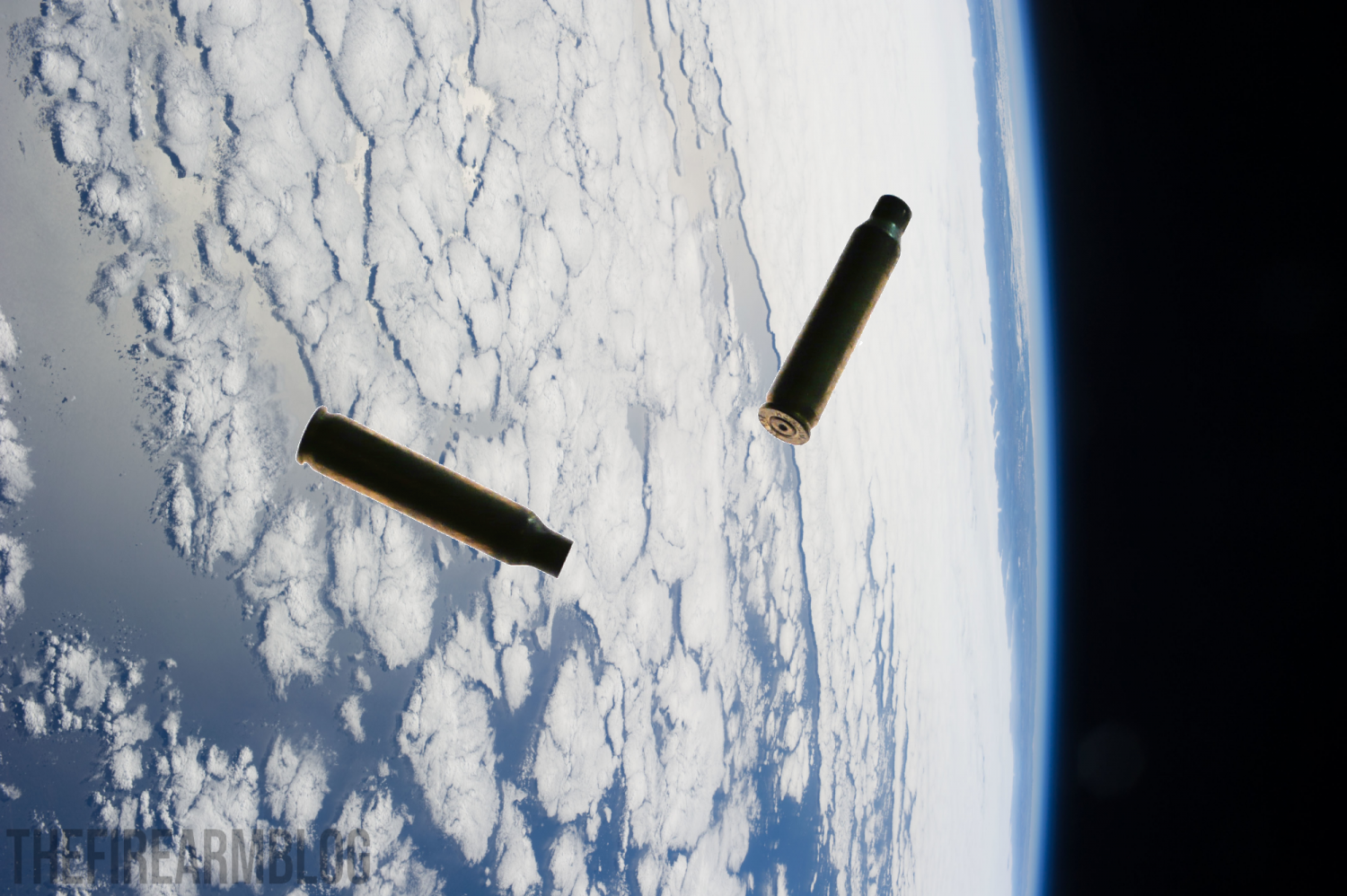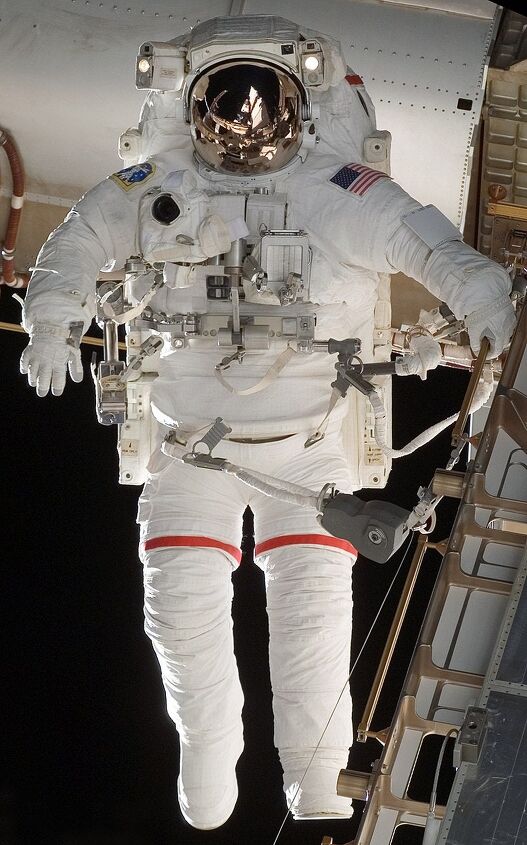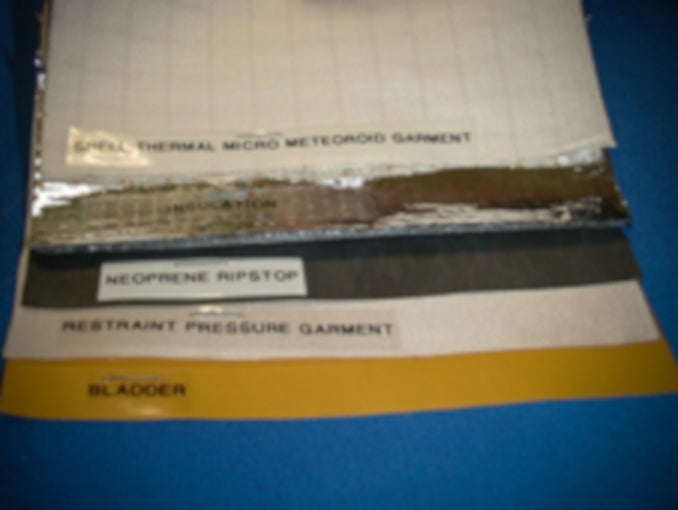Arming The Space Force: Choosing The Official Space Gun, PART 1
https://ift.tt/2t3LRKc
Ever since President Trump announced that a Space Force should be established, firearms enthusiasts have envisioned space suited door gunners, shooting any variety of futuristic-looking “space guns”. The hope for a phased plasma rifle in the 40-watt range has been renewed once more. As we move closer to the proposed, four year buildup of the United States Space Force, let’s look at some more realistic options for choosing a standard issue firearm of the Space Force. First, though, let’s look at some of the challenges that stand in the way of bringing a firearm into the final frontier.

arming the space force with space guns: the weight problem… in zero gravity?
The problem of weight, as it pertains to choosing which firearm to fire in space, comes in two different aspects. Weight of the chosen firearm itself isn’t actually that large of a challenge, but the weight of the bullet it fires can come into play if a spacewalker fires enough rounds. Getting the gun and ammo into space is fairly trivial since each gun will only weigh one and a half to three pounds, which is only a tiny fraction of the weight of the person that will be carrying it.
Firing a gun in space will have an effect on the shooter’s speed and motion, which is based on the weight of the projectile and the position of the gun relative to the center of the shooter’s mass. Sir Isaac Newton’s third law states that for every action, there is an equal and opposite reaction. The heavier the bullet, the more it affects the shooter’s speed, which compounds the issue each time a round is fired. Most basic YouTube explanations of this issue claim that each shot will send an astronaut backwards, which is sort of true, but more accurately, it would really be slowing them down in the context of being in orbit. Either way, if you’re moving backward or slowing down, the shooter may want to be tethered to the space ship, I know I would. The other option would be to have a self-contained stabilization system, which is certainly possible but sounds complicated, and expensive. I’m sorry to dash any hopes of a Moonraker style space battle, but perhaps we can work up to it… Or was that a cautionary tale rather than a how-to?

Author’s over-simplified animation of Newton’s 3rd Law in action while shooting a gun in space.
arming the space force with space guns: extreme temperatures
The next challenge when settling on a standard firearm for the Space Force is wild temperature swings. Temps range from around 460 to -460 degrees Fahrenheit. Are the polymer guns up to the task, or will they become too brittle in the cold or melt in the light of the sun? In Earth’s orbit, the astronauts see these swinging temperatures about every 90 minutes.
These wild temperature swings will also affect lubrication, either by evaporating it off or freezing it solid. This problem leads me to choose a space gun that can run without lubrication, so as much as the AR-15 pattern rifle has gained military usage across the globe, its need for lube will likely preclude it orbiting the world that has embraced it.
The following two videos demonstrate another interesting factor when it comes to using firearms in space. Extreme cold will negatively affect the velocity at which the bullet will leave the muzzle of the chosen space gun. In the first video from Davydiver’s YouTube channel shows a shooter using liquid nitrogen to cool down .22LR cartridges to around -300 degrees (F) to see what affect the extreme negative temps have on the velocity. In the second video, Eric from the Iraqveteran8888 YouTube channel fires a gun cooled to about -110 degrees (F).
As demonstrated in the videos, the extreme negative temps do decrease the velocity of the projectiles, but it’s not a complete deal-breaker when it comes to using conventional arms as space guns.
arming the space force with space guns: ruling out rifles
Yes, you read the heading right. I’m completely ruling out rifles for the Space Force, at least while actually in space. Yet another challenge of taking guns into space, is the limitations of the spacesuit, which are currently referred to as Extravehicular Mobility Unit (EMU). Spacesuits have always been somewhat cumbersome, so slinging a rifle will only complicate matters. Before you take to your keyboard to bring the fire of a thousand suns upon me, there’s more. The torso of the EMU is made of a hard, rounded shell, covered with the fabric layers. Even if a special torso shell could be fabricated to accommodate shouldering a rifle, the helmet will cause some serious sight alignment issues.
When it comes to actually firing a firearm in anger in space, simply landing a bullet on target is the goal. The bullet doesn’t have to expand, and it doesn’t have to tumble and yaw inside the enemy. Just putting a hole in the enemy’s suit creates a big problem he’ll need to sort out and will most likely take him out of the fight. Current EMU’s have enough air and pressure for a quick retreat to the space station, so the more holes the suit has, the time left to retreat reduces considerably.
EMU suits are constructed of 13 layers of varying materials, one of which is Kevlar. However, that layer is thin and designed to stop really fast micro meteors up to 2mm. Despite the EMU’s 13 layers, there’s still only three-sixteenths of an inch (3/16″) between an astronaut and very unlivable conditions. It’s because of these thin layers that I think a rifle would be overkill, while adding more parts and complication in carrying, storage and maintenance.

Extravehicular Mobility Unit (EMU). Mobility has been addressed in several newer designs, but shouldering a rifle would still be difficult as the helmet size hasn’t been vastly reduced. Image from Spaceflight.nasa.gov.
arming the space force with space guns: defeating soft armor
If we can assume that the current ballistic protection in EMU spacesuits is at Level II-A or less, then let us also assume that it could eventually be up-armored to Level IIIA when the escalation begins. In my opinion, outfitting an entire space suit with hard armor adds cost to get it into orbit and carries a mobility penalty by adding bulk to an already complicated and cumbersome system. If this assumption is correct, then defeating that armor shouldn’t be a monumental task, even though I’ve already excluded rifles from consideration. The photo below (poorly) shows the layers used to construct an astronaut’s EMU. A recent article on TFB reported on a new possible 3D printed polymer product for ballistic protection, which readers immediately realized the potential for protection in space. We’ll keep an eye on that development as it unfolds.

Layers of the spacesuit (EMU). This image was quite small and had to be enlarged but is still blurry. Image from Nasa.gov.

CONCLUSION
Having delved into the weight issue, extreme temps, and excluded rifles from the mix, but adding armor, we’ve just narrowed down the list of possible guns to choose from in a hurry. Now that the bigger challenges to bringing guns into space have been addressed, in Part 2, I’ll cover the calibers and guns that I think fit the bill for arming the new Space Force.
What do you think? Are there other hurdles I didn’t cover? Based on the factors above, what do you think the best space gun would be?
guns
via The Firearm Blog https://ift.tt/2JX8W99
December 24, 2019 at 08:04PM